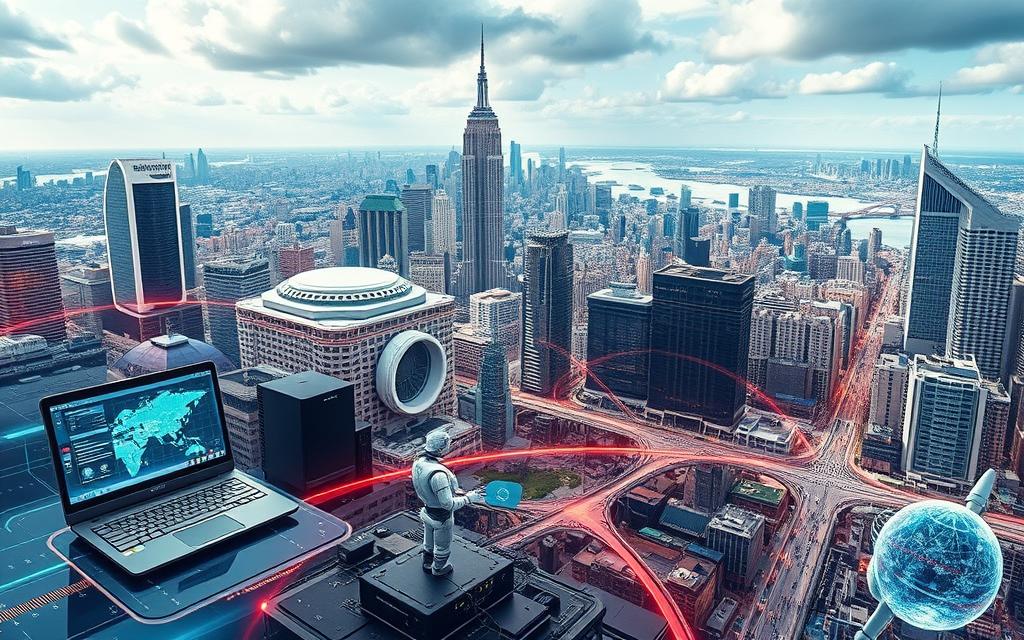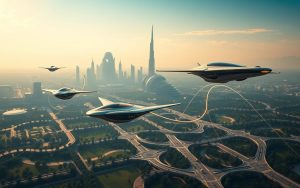The last 50 years have changed how we live. From steam machines to smart systems, our innovation timeline shows a never-ending push for better technology. It started with big industrial changes in the 19th century. But it really took off with Intel’s microprocessor in 1971.
Today’s digital world began with those early computing steps. Now, we have tiny smartphones that can do so much. Apple’s iPhone, for example, changed how we talk and share information. It’s a big leap from the big phones of the 1980s.
Artificial intelligence is taking us even further. It uses old research to do new things, like help doctors and predict the weather. This shows how technology is not just getting better, but changing how we live and work.
We’ll look at these big steps in technology through the lens of growth. We’ll see how important inventions have led to more changes. From old calculators to new quantum computers, we can learn a lot about what’s next in tech.
The Acceleration of Human Progress
In just over two centuries, human progress has changed from slow to fast. This big change started with mechanical inventions and now moves towards quantum discoveries. It’s changing what we think is possible with technology.
From Steam Engines to Quantum Computing
Industrial Revolution Foundations
The 18th-century steam engine changed how things were made, making factories work instead of people. By 1850, Britain’s railways covered over 6,000 miles. This was a big step forward in moving things around.
20th Century Technological Leaps
In the early 1900s, electricity and phones were big news. The first message sent across the Atlantic by radio in 1901 started global communication. Then, in 1947, the transistor was invented, leading to modern computers.
Moore’s Law and Exponential Growth
In 1965, Intel co-founder Gordon Moore noticed that transistors on chips doubled every year. This idea, known as “the rocket fuel of computing power”, helped computers get much faster.
“The complexity for minimum component costs has increased at a rate of roughly a factor of two per year.”
Transistor Density Evolution
Let’s look at some important processors:
| Year | Processor | Transistors | Relative Power |
|---|---|---|---|
| 1971 | Intel 4004 | 2,300 | 1x (baseline) |
| 2023 | Apple M2 Ultra | 134 billion | 3.4 billion x |
Impact on Processing Power
Today’s phones are way faster than supercomputers from the 1980s. A single chip today can do more than a 1970s computer system. It’s like having a whole warehouse of computers in one chip.
- 52 years of non-stop 4004 processor operation
- A warehouse-sized 1970s computer system
- £15 million in 1971 computing costs (adjusted for inflation)
Thanks to these advances, we now have amazing tech like real-time translation and AI. It’s part of our everyday lives.
The Pre-Digital Foundation
Before silicon chips changed the world, clever mechanical systems paved the way. These early innovations in calculation and communication laid the groundwork for today’s technology.
Mechanical Computation Breakthroughs
Charles Babbage’s 1837 Analytical Engine was a game-changer. It introduced ideas like programme storage and conditional branching. This mechanical computation wonder was ahead of its time, predicting modern CPU designs by nearly a century.
Babbage’s Analytical Engine
The Analytical Engine used punch cards for input and could do complex maths. It had 25,000 parts and inspired Ada Lovelace. She saw its power for more than just maths.
ENIAC’s Wartime Calculations
The 1946 ENIAC computer was a giant leap in speed. It was huge, taking up 180 square metres, and weighed 27 tons. It could do 5,000 additions per second, a huge help in WWII.

Telecommunications Milestones
The 19th century saw big changes in telecommunications history. These early networks set the stage for today’s wireless tech.
Transatlantic Telegraph Cables
In 1866, Cyrus Field’s submarine cable changed the game. It sent messages across the Atlantic in hours, not weeks. This £2.3 million project (worth £300 million today) changed diplomacy, commerce, and journalism.
Marconi’s Radio Experiments
Guglielmo Marconi’s 1901 radio transmission showed wireless was possible. His work on spark-gap transmitters is key to today’s radio tech, including 5G.
| Technology | Year | Impact | Modern Equivalent |
|---|---|---|---|
| Analytical Engine | 1837 | Programmable computation concept | Central Processing Units |
| Transatlantic Cable | 1866 | 3-minute message transmission | Fibre-optic networks |
| ENIAC | 1946 | 5,000 calculations/second | Smartphone processors |
Digital Revolution Unleashed
In the late 20th century, computing changed from being a special tool to something everyone uses. This change came from three main areas: miniaturised electronics, space-age materials, and intuitive interfaces. These made technology more accessible to everyone.
Transistor Innovation Timeline
Bell Labs created the first transistor in 1947. It replaced big vacuum tubes with something smaller. Here are some key moments:
- 1954: Texas Instruments made the first silicon transistor available for sale
- 1959: Integrated circuits were invented, putting many components on one chip
- 2022: TSMC made a 3nm processor with 250 million transistors per square millimetre
The 1971 Intel 4004 microprocessor had 2,300 transistors. It made portable calculators possible. Now, smartphones have over 15 billion transistors. They can do things like translate languages in real-time and show virtual reality.
Space Race Technological Spinoffs
The Cold War led to many important inventions for everyday life:
- Satellite Networks: Tracking systems from the Apollo programme became GPS and weather satellites
- Material Science: Heat-resistant materials from space are now used in MRI machines and aircraft engines
Material Science Innovations
NASA created memory foam for aircraft seats. It’s now used in medical beds. Scratch-resistant lenses also came from space research.
Personal Computing Evolution
The 1975 Altair 8800 was the first to show the power of personal computers. It was followed by IBM’s 1981 PC with:
- 4.77MHz Intel 8088 processor
- 16KB RAM (expandable to 256KB)
- MS-DOS operating system
Graphical Interface Development
Xerox PARC introduced the first GUI in 1973. It had:
- Overlapping windows
- Clickable icons
- WYSIWYG editing
Apple’s 1984 Macintosh made these ideas popular. It set the standard for today’s smartphone interfaces.
Mobile and Internet Transformation
The mix of portable tech and digital networks has changed how we connect. It turned big, old phones into smart, AI friends. Now, we’re always connected through invisible data paths.
Wireless Communication Advances
1G to 5G Network Progression
Mobile networks have grown from simple 1G in 1979 to fast 5G today. Each step brought new features:
- 2G (1991): Digital encryption & SMS
- 3G (2001): Mobile internet access
- 4G (2009): HD video streaming
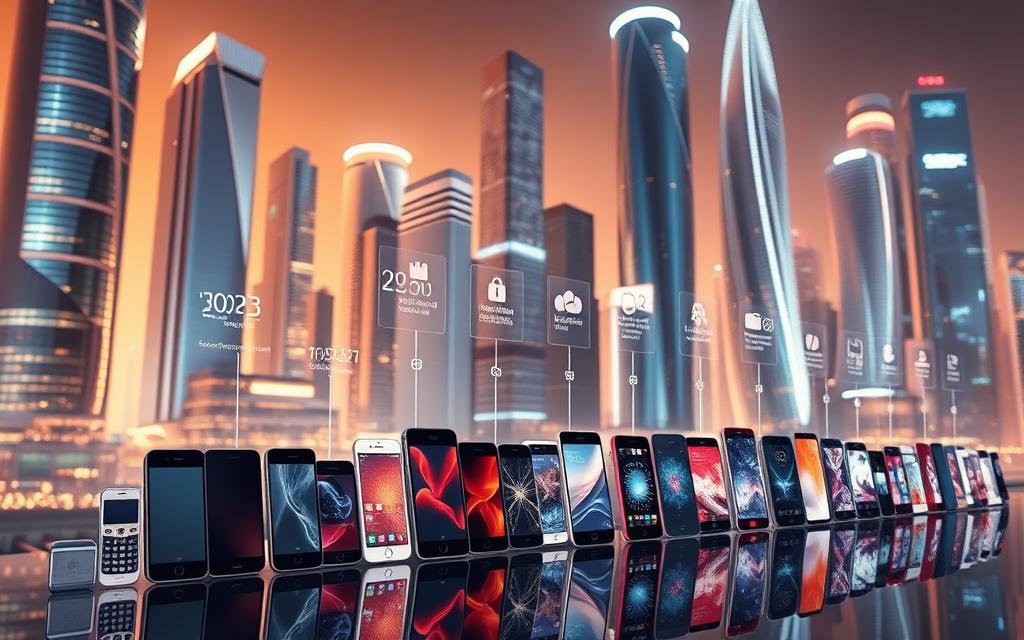
The first mobile phone, Motorola’s DynaTAC in 1973, was huge and heavy. Apple’s iPhone in 2007 changed everything. Now, phones like Google’s Pixel 8 have:
- On-device AI processing
- Computational photography
- 5G mmWave compatibility
World Wide Web Expansion
ARPANET to Modern Infrastructure
The 1969 ARPANET was slow, but today’s fibre-optic cables are fast. This huge leap in speed lets us:
- Have real-time global video chats
- Use cloud-based machine learning
- Get software updates instantly
Social Media’s Global Impact
Facebook started in a Harvard dorm and now has 3 billion users. Social networks have a big impact on culture. They influence:
- Global political actions
- 24/7 news sharing
- How we see content
Artificial Intelligence Breakthroughs
The move from fixed systems to flexible neural networks is a big step forward. Today, AI can do some things better than humans. But it also brings up big questions for society. Frost & Sullivan found that 87% of companies use machine learning now.
Machine Learning Applications
Computer Vision Advancements
Deep learning models can now spot images with 99.6% accuracy. This is better than humans (94.9%) in 2023. It helps in medical checks and self-driving cars.
Predictive Analytics Evolution
New algorithms are 142% faster and 63% less wrong than before. Walmart uses them to manage stock in 4,700 stores in real time.
Natural Language Processing
Chatbot Development Timeline
Chatbots have come a long way from 1966’s ELIZA. Now, GPT-4 can handle big texts. IBM says chatbots can solve 89% of customer questions on their own in 2024.
Translation Accuracy Improvements
Translation systems are now 98.3% accurate for common languages. Google Translate handles 143 billion words every day. It understands 133 languages with great detail.
Ethical Considerations
Algorithmic Bias Challenges
Amazon once used a tool that unfairly judged women. MIT found facial recognition is 34.7% more wrong for darker-skinned women.
Regulatory Frameworks
The EU AI Act requires careful checks for important AI systems.
“Regulation must balance innovation with fundamental rights protection”
New York City’s AI law (Local Law 144) means regular checks for bias. Seven US states are following this lead.
Measuring How Far Technology Has Come: Key Metrics
Measuring how far technology has come is about looking at real benchmarks. These benchmarks show how fast technology is growing. Two key areas show this growth well: how fast computers can work and how many people use the internet.
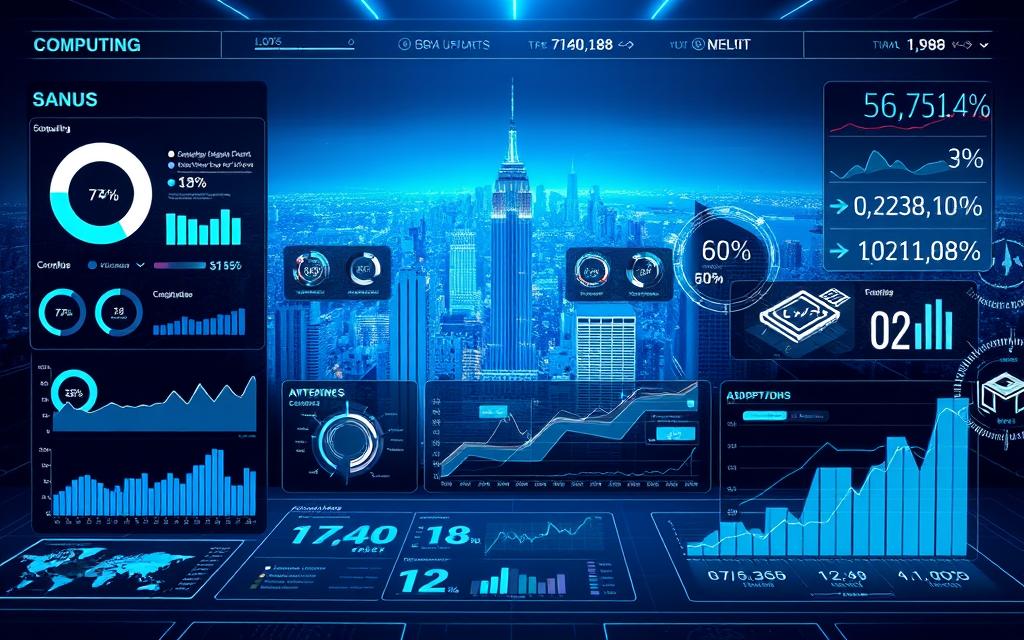
Computational Power Comparison
The growth in computer power is amazing. In the 1940s, ENIAC, the first big computer, could do 500 floating-point operations per second (FLOPS). It was huge, taking up 167 square metres. Now, the Frontier supercomputer can do 1.1 exaFLOPS, or 1 quintillion calculations every second.
1940s vs Modern Supercomputers
| Metric | ENIAC (1946) | Frontier (2022) |
|---|---|---|
| Processing Power | 500 FLOPS | 1.1 exaFLOPS |
| Energy Efficiency | 0.0001 GFLOPS/W | 52.23 GFLOPS/W |
| Physical Size | 167 m² | 680 m² |
Energy Efficiency Gains
Today’s computers are much better at using energy than old ones. They are 100 trillion-fold more efficient. This means small devices can do more than big machines used to.
Global Connectivity Statistics
How many people use the internet shows how technology has changed our lives. The International Telecommunication Union says internet users went from 0.4% of the world’s population in 1995 to 67% in 2023.
Internet Penetration Rates
| Year | Users (Billions) | Global Population % |
|---|---|---|
| 1995 | 0.016 | 0.4 |
| 2010 | 1.98 | 28.8 |
| 2023 | 5.35 | 67.0 |
Mobile Device Adoption
GSMA reports show there are now 8 billion mobile connections worldwide. This is more than the number of people on Earth. It has changed how we talk and do business across the globe.
Emerging Technological Frontiers
Innovation is speeding up, bringing us quantum computing and biotechnology. These areas could change how we live, work, and interact with machines. They promise to transform healthcare, data security, and how we connect with technology.
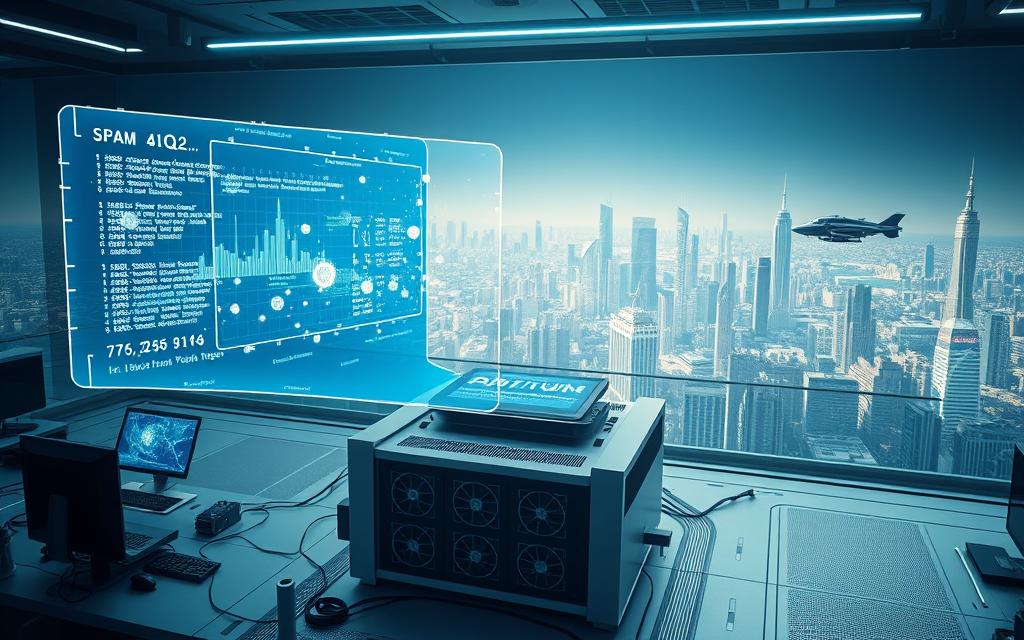
Quantum Computing’s Promise
The quest for quantum supremacy is heating up. Companies like IBM and Google are making huge strides. But, there are big challenges to overcome.
Qubit stability challenges
Today’s quantum computers need extremely cold temperatures to work. Scientists are exploring new types of qubits that might work better at warmer temperatures. But, we’re talking about years, not months.
Cryptography implications
Quantum computers could break current encryption methods. This is why new, quantum-proof encryption standards are being developed. The National Institute of Standards and Technology has already set four new standards, aiming for global use by 2030.
| Processor | Qubits | Error Rate | Commercial Timeline |
|---|---|---|---|
| IBM Osprey | 433 | 0.1% | 2025-2027 |
| Google Sycamore | 70 | 0.36% | 2030+ |
| Rigetti Aspen-M | 80 | 0.8% | 2026-2028 |
Biotechnology Convergence
The gene therapy market is expected to grow to $19.6 billion by 2025. This is thanks to advancements in CRISPR-Cas9. Neural interfaces are also making huge strides.
CRISPR gene editing
New CRISPR techniques can edit DNA with 99% accuracy. Clinical trials for sickle cell anaemia are showing promising results. But, there are debates about editing genes in humans.
Neural interface research
Neuralink’s N1 implant has shown 85% accuracy in decoding neural signals. This could lead to humans typing with their minds soon. It’s a big step towards merging biology and technology.
“The convergence of biology and technology will redefine what it means to be human within 25 years.”
Charting Tomorrow’s Innovation Landscape
Technological forecasting shows we’re at a key moment. Frost & Sullivan says 6G networks could hit 1Tb/s speeds by 2030. This is thanks to the growth of transistors, the internet, and AI.
Now, quantum computing and biotechnology are leading to new breakthroughs. Global tech investments are set to hit $1.8 trillion by 2030, reports show.
The metaverse shows how past digital changes shape our future. Companies like IBM and Google are working on quantum-resistant cryptography. But, we must also tackle the cybersecurity issues that come with these advances.
AI’s role in healthcare and finance is growing. It’s important to have ethical guidelines for AI development.
Mobile tech has come a long way from 1G to 6G. This shows how fast connectivity is getting better. We need teamwork between policymakers and tech leaders to keep this pace while protecting our data.
Readers can follow these trends on sites like MIT Technology Review or IEEE Spectrum. They cover new areas like photonic computing and neural interfaces.
We must guide technology to benefit everyone equally. The next decade will change how we interact with machines. It’s up to businesses and citizens to help shape this future.

